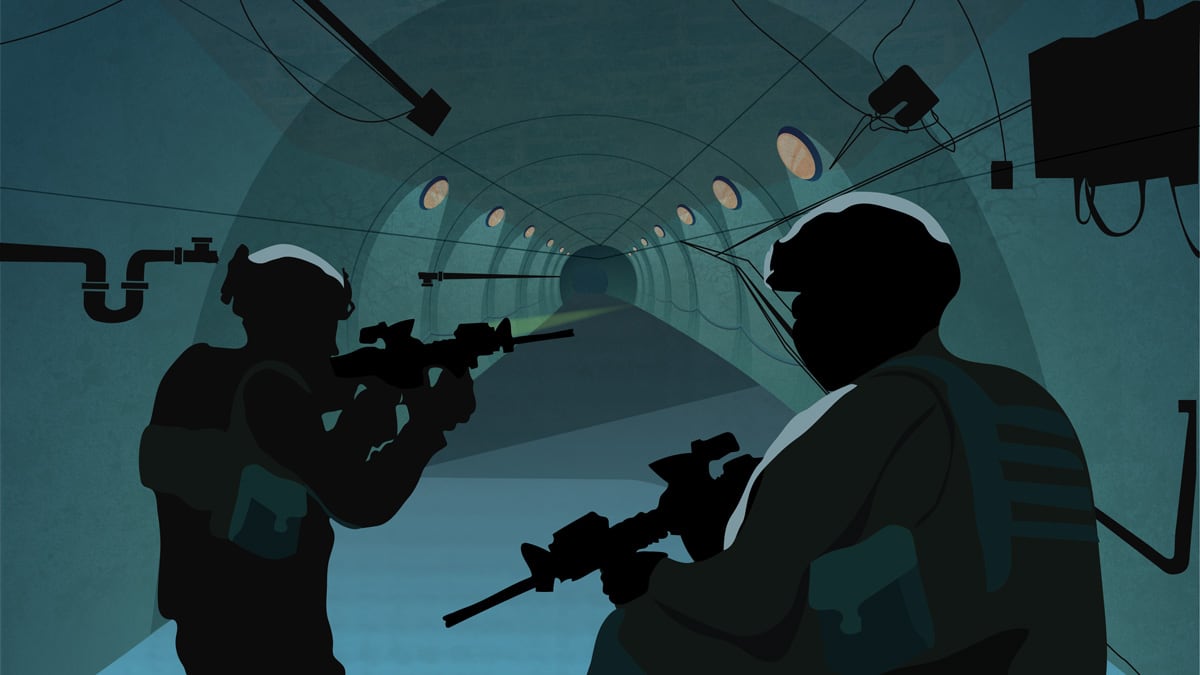The Army’s theater-level detachment that’s testing how it will fight in the unseen realms of warfighting is discovering ways for the service to compete to avoid conflict.
At the tip of that is the exact unit, the Intelligence, Information, Cyber, Electronic Warfare and Space, or I2CEWS, commanded by Lt. Col. Derek Bothern, who’s spent the past decade working as an Army space officer.
Bothern is working within the Multi-Domain Task Force that the Army first used in the field during the Rim of the Pacific Exercise 2018. That was when some of the concepts of MDO moved from theory, whiteboard and tabletop exercises to a network of distributed fires on land and sea and within the cyber and space domains.
RELATED

His detachment in its pilot phase back in 2017 built to 35 soldiers until it was officially activated in January and has since grown to 178 strong.
That pilot program helped the detachment establish new tactics, techniques and procedures and sparked new ideas on how to employ these assets and capabilities at a tactical level, he said.
In part, that’s because most recently electronic warfare has been at a much higher echelon and not in the toolkit of a brigade or battalion commander.
While his team is working at the theater level out of Joint Base Lewis-McChord, Washington, they’re sending staff across the region.
Exercises in just the past two years have included Pacific Sentry, Joint Warfighter Assessment, RIMPAC, Valiant Shield, Orient Shield, Yama Sakura and Talisman Sabre, said Capt. Rachael Jeffcoat, 17th Field Artillery Brigade spokeswoman.
They operate as part of the MDTF but fall under I Corps, 17th FA Brigade.
In Orient Shield alone, one of the most recent exercises, the MDTF pushed 1,200 soldiers across Japan, while the I2CEWS detachment had elements in Japan and at Fort Dix, New Jersey where his cyber operations team worked.
That exercise saw the detachment working with Japanese defense forces in how they will deploy lethal and nonlethal fires and the Fort Dix section conducted defensive cyber operations with Japanese counterparts.
Early successes have come, Bother said, in how they’ve created a cross-field training. Each of their members goes through training on the work of the other domains. That creates situations in which an EW specialist might team up with someone in the space domain to solve a problem.
And though they’re working through these new ways of fighting at a theater level, Bothern said that the effects don’t stop at the strategic, operational and tactical levels. Each influences the other.
A challenge they’re working to overcome is creating a common operating picture for commanders, he said.
That’s because signals come across all five domains and three dimensions.
The characteristics of a tank don’t change. But signals characteristics can change at any point.
You can’t do a vehicle recognition type of assessment in the signals realm, it’s much more complicated.
And the COP of the future will have to allow commanders to visualize things that right now they can’t see.
While a lot of buzz surrounds much of what’s being done in the various unseen domains, Bothern is quick to point out that the Army was doing demanding work in the electronic realm as far back as World War II.
That continued in jamming and other types of electronic attack even in the counterinsurgency warfighting of Vietnam.
“Putting EW attack with lethal fires is actually something we did very well up into the 1990s and early 2000s,” Bothern said.
But with a new counterinsurgency and counterintelligence fight, information and signals collection became more of the focus rather than electronic attack, which has re-emerged as a priority with the new national defense strategy.
Todd South has written about crime, courts, government and the military for multiple publications since 2004 and was named a 2014 Pulitzer finalist for a co-written project on witness intimidation. Todd is a Marine veteran of the Iraq War.





